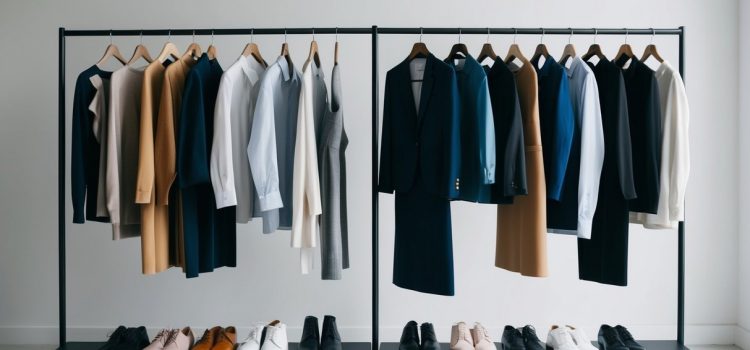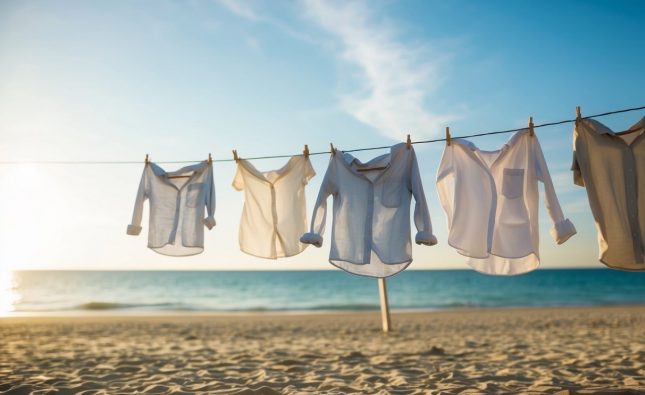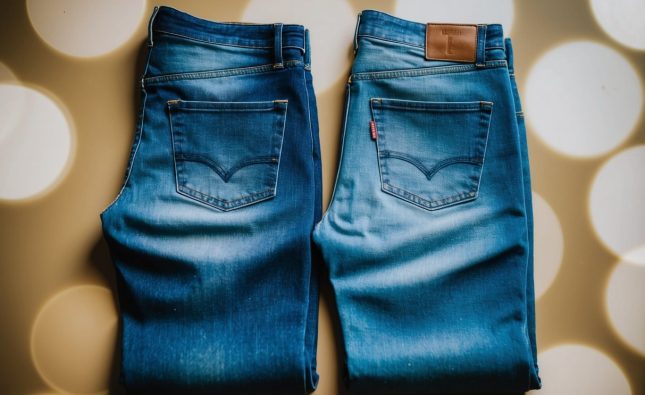
Choosing the right attire for any occasion can be challenging. Casual wear promotes comfort and relaxation, making it ideal for everyday settings. In contrast, formal wear exudes sophistication and is reserved for special events or professional settings.

Understanding the key differences between casual and formal wear is essential for navigating social situations effectively. Casual attire often includes items like jeans and t-shirts, while formal outfits might consist of suits, ties, or elegant dresses. Recognizing when to wear each type can enhance one’s wardrobe choices and social interactions.
This guide will clarify what defines casual and formal wear, offering tips to help individuals dress appropriately for various events. By grasping these distinctions, readers can feel confident in their clothing choices, ensuring they make the right impression no matter the occasion.
Defining Casual and Formal Wear
Casual wear and formal wear serve distinct purposes in fashion. Understanding their characteristics is essential for making appropriate clothing choices for various occasions.
Characteristics of Casual Wear
Casual wear emphasizes comfort and personal expression. It usually includes items such as jeans, t-shirts, and sneakers. Fabrics are often soft and relaxed, allowing for ease of movement.
Common Features:
- Materials: Cotton, denim, jersey.
- Fit: Often loose-fitting or tailored for comfort.
- Occasions: Suitable for everyday use, outdoor activities, and informal gatherings.
Casual wear can also incorporate trendy elements, such as graphic tees or fashionable sneakers. Accessories in casual fashion are typically simple, like watches or caps, enhancing comfort without being overly elaborate.
Characteristics of Formal Wear
Formal wear denotes a polished appearance and is reserved for significant occasions. It usually includes suits, ties, dresses, and dress shoes. Such attire adheres to strict guidelines for fabrics and cuts.
Key Elements:
- Materials: Wool, silk, satin, and other high-quality fabrics.
- Fit: Tailored and structured for a refined silhouette.
- Occasions: Appropriate for business meetings, weddings, and gala events.
Accessories play a crucial role in formal wear. They may include cufflinks, ties, or clutch bags that complement the overall look while maintaining elegance. Formal wear often carries specific cultural or regional guidelines, especially in tuxedo styles and evening gowns.
Occasions for Casual vs. Formal Wear
Choosing the right attire depends on the event or setting. Each occasion dictates whether casual, formal, or semi-formal attire is appropriate.
Casual Occasions
Casual wear is suitable for laid-back events or activities. These include outings with friends, casual Fridays at work, and informal gatherings.
Typical items include:
- T-Shirts: Simple or graphic tees that offer comfort.
- Jeans: Denim pants that are versatile and easy to wear.
- Sneakers: Comfortable footwear that complements a relaxed look.
In these settings, personal style can shine. Accessories can be more playful, and layering is common. Casual attire provides flexibility, making it easy to express individuality.
Formal Occasions
Formal wear is required for events that call for a polished appearance. This includes weddings, galas, and official ceremonies.
Key elements include:
- Suits or Tuxedos: Essential for men attending formal gatherings.
- Formal Dresses: Women typically wear long or cocktail dresses.
- Dress Shoes: These are necessary, with options differing by gender.
Dressing formally conveys respect and adherence to the event’s gravity. Proper grooming and accessory choices can enhance the overall look. This attire reflects sophistication.
Semi-Formal and Business Casual Explained
Semi-formal attire bridges the gap between formal and casual. It’s appropriate for events like cocktail parties or upscale dinners.
Typical attire includes:
- For Men: Dress shirts, slacks, and blazers without a tie.
- For Women: Cocktail dresses or classy skirts paired with elegant tops.
Business casual is often acceptable in professional settings. It includes tailored pants, blouses, and closed-toe shoes.
This category allows some personality while ensuring a professional appearance. It is essential to consider the workplace culture when choosing business casual attire.
Choosing the Right Outfit

Selecting the right outfit requires consideration of various factors that align with the occasion and personal style. Both casual and formal wear serve different purposes, and understanding these distinctions is essential for making the appropriate choice.
Factors to Consider when Selecting Casual Wear
When choosing casual wear, comfort and style take precedence. Key factors include the setting, personal preferences, and current trends. Casual outfits can vary widely, from jeans and t-shirts to smart casual pieces like chinos and polo shirts.
Setting Considerations:
- Social Gatherings: Opt for relaxed fits that allow movement.
- Work Environment: Consider business casual options if office-appropriate.
Fit and Fabric:
Lightweight fabrics like cotton or linen are ideal for casual settings. Ensuring the fit complements the body type is crucial. Experimenting with layers can add depth to the outfit while keeping it comfortable.
Factors to Consider when Selecting Formal Wear
Formal wear calls for a more refined approach, focusing on elegance and sophistication. Important considerations include event type, dress code, and seasonal appropriateness.
Event Type:
- Weddings or Dinners: A suit or evening gown is suitable.
- Corporate Functions: A tailored suit or cocktail dress aligns well.
Dress Code:
Adhering to specified dress codes is essential. Understanding terms such as “black tie” or “business formal” shapes the outfit selection.
Color and Accessories:
Dark colors like navy, black, or charcoal are common for formal attire. Accessories, such as ties, cufflinks, and elegant shoes, enhance the overall look and should coordinate with the outfit for a polished appearance.
Care and Maintenance
Proper care and maintenance of clothing prolongs its life and ensures it always looks its best. Each type of attire has specific requirements to maintain its fabric and structure.
Maintaining Casual Clothing
Casual wear often comprises a variety of fabrics, including cotton, denim, and polyester blends. Regular washing is essential, but it’s important to follow the care label instructions.
- Washing: Use cold water for dark colors to prevent fading and avoid bleach unless necessary.
- Drying: Air-drying is preferable; high heat can shrink clothes or damage fabric integrity.
- Storing: Fold casual items to avoid creasing; hanging can be suitable for certain pieces like shirts or jackets.
Additionally, consider using fabric softeners or dryer balls to maintain softness. Regularly check for stains and treat them promptly to prevent permanent marks.
Maintaining Formal Attire
Formal wear generally includes delicate fabrics such as silk, wool, and linen. These require extra care to maintain their appearance and fit.
- Dry Cleaning: Many formal garments benefit from professional cleaning. Schedule this service after a few wears to avoid dirt buildup.
- Ironing: Use a low heat setting and a pressing cloth to avoid burning delicate fabrics. Always check the label for specific instructions.
- Storing: Use padded hangers to help maintain the shape of jackets and dresses. Keep garments in breathable garment bags to protect against dust.
Inspect formal wear regularly for loose threads or minor damage. Addressing these issues early can prevent more extensive repairs later.












